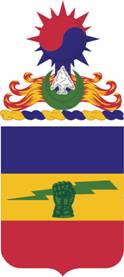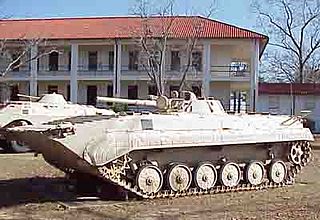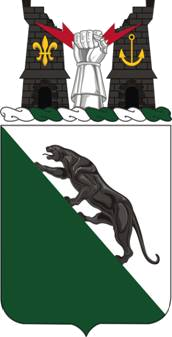
The 1st Armored Division, nicknamed "Old Ironsides", is a combined arms division of the United States Army. The division is part of III Armored Corps and operates out of Fort Bliss in El Paso, Texas. It was the first armored division of the United States' Army to see battle in World War II. Since World War II, the division has been involved in the Korean War, Cuban Missile Crisis, Persian Gulf War, Iraq, Afghanistan, and several other operations. The division has also received numerous awards and recognition.

The 1st Cavalry Division is a combined arms division and is one of the most decorated combat divisions of the United States Army. It is based at Fort Cavazos, Texas. It was formed in 1921 and served during World War II, the Korean War, the Vietnam War, the Persian Gulf War, with the Stabilization Force in Bosnia-Herzegovina, in the Iraq War, in the War in Afghanistan as well as Operation Freedom's Sentinel and Operation Inherent Resolve. As of July 2023, the 1st Cavalry Division is subordinate to III Armored Corps and is commanded by Major General Kevin D. Admiral.

The 78th Training Division (Operations) ("Lightning") is a unit of the United States Army which served in World War I and World War II as the 78th Infantry Division, and currently trains and evaluates units of the United States Army Reserve for deployment.

The 761st Tank Battalion was an independent tank battalion of the United States Army during World War II. Its ranks primarily consisted of African American soldiers, who by War Department policy were not permitted to serve in the same units as white troops; the United States Armed Forces did not officially desegregate until after World War II. The 761st were known as the Black Panthers after their distinctive unit insignia, which featured a black panther's head, and the unit's motto was "Come out fighting". During the war, the unit received a Presidential Unit Citation for its actions. In addition, a large number of individual members also received medals, including one Medal of Honor, eleven Silver Stars and approximately 300 Purple Hearts.

The 73rd Cavalry Regiment is a Cavalry Regiment in the United States Army, first formed in 1941. The three squadrons of the 73rd Cavalry Regiment provide reconnaissance, surveillance, and target acquisition (RSTA) to the Brigade Combat Teams of the 82nd Airborne Division. 3rd Squadron is assigned to 1st Brigade, 1st Squadron is assigned to 2nd Brigade, and 5th Squadron is assigned to 3rd Brigade.
The 46th Infantry Regiment is a unit in the United States Army that served in World War II and Vietnam. The 1st Battalion, 46th Infantry Regiment currently conducts Infantry One Station Unit Training under the 197th Infantry Brigade.
The 64th Armor Regiment is an armor regiment of the United States Army, organized under the United States Army Regimental System. It is descended from the 758th Tank Battalion (Light) that served in the Italian campaign during World War II. Redesignated as the 64th Tank Battalion, it was assigned to the 3rd Infantry Division during the Korean War and it spent most of the Cold War stationed in West Germany before elements were transferred to Ft. Stewart, Georgia in the late 1990s. The regiment participated in Desert Shield, Desert Storm, Desert Fox, Desert Spring, Operation Iraqi Freedom and Operation Enduring Freedom.

The 32nd Cavalry Regiment is a cavalry formation of the United States Army. From 1941 to 2000, it was an armor formation.

The Battle of Rumaila, also known as the Battle of the Causeway or the Battle of the Junkyard, was a controversial attack that took place on March 2, 1991, two days after President Bush declared a ceasefire, near the Rumaila oil field in the Euphrates Valley of southern Iraq, when the U.S. Army forces, mostly the 24th Infantry Division under Major General Barry McCaffrey engaged and nearly annihilated a large column of withdrawing Iraqi Republican Guard armored forces during the immediate aftermath of the Gulf War.

The 33rd Armor Regiment was an armored regiment in the United States Army first formed in 1941. In 2005, the 33rd Armor was redesignated 33rd Cavalry Regiment. The 1st Squadron, 33rd Cavalry Regiment, a part of the 3rd Brigade Combat Team, 101st Airborne Division, carries on the lineage of 33rd Armor Regiment.

The 34th Armor Regiment is an armored regiment of the United States Army formed in 1941.

The Armor Branch of the United States Army is an active armored warfare combat arms branch.

The 71st Cavalry was originally constituted on 3 December 1941 in the Army of the United States as the 701st Tank Destroyer Battalion.
The 3rd Field Artillery Regiment is a field artillery regiment of the United States Army, first formed in 1812, although regimental units trace their lineages as far back as 1794. Based on the service of these antecedents, the regiment claims battle honors for the War of 1812, the Seminole campaign, the Mexican War, the Civil War, the Spanish–American War, and the Philippine Insurrection. The regiment served with the 6th Division during World War I, with the 5th Division, 6th Division and 2d Cavalry Division between the world wars, and with the 9th Armored Division during and after World War II. Since 1961, the regiment has been a parent regiment under the Combat Arms Regimental System and the U.S. Army Regimental System, with regimental elements serving with the 1st, 6th, and 8th Infantry Divisions; 2nd and 3rd Armored Divisions; 1st Cavalry Division; 194th Armored Brigade; and various field artillery brigades and groups. Two regimental battalions are currently active: the 2nd Battalion in the 1st Armored Division and the 5th Battalion in the 17th Field Artillery Brigade
The 16th Field Artillery Regiment is a field artillery regiment of the United States Army. The regiment served with the 4th Division in World War II and with the 4th and 8th Divisions between the World Wars. As the 16th Armored Field Artillery Battalion, it served with the 9th Armored Division during World War II, and with the 2nd Armored Division after the war. Designated a parent regiment under the Combat Arms Regimental system, and later the U.S. Army Regimental System, since 1957, regimental elements have served with the 1st, 2nd and 4th Armored Divisions; the 4th, 8th, and 81st Infantry Divisions; and the 1st Cavalry Division. Regimental elements have participated in combat in Vietnam, and in Operation Iraqi Freedom. The regiment currently has a single active battalion, the 3rd Battalion, 16th Field Artillery, assigned to the 2nd Brigade Combat Team, 1st Cavalry Division and stationed at Fort Hood, Texas.

The 27th Field Artillery Regiment is a field artillery regiment of the United States Army, first Constituted in 1918 in the National Army (USA).

The 69th Armor is an armored (tank) regiment of the United States Army. The 69th Armor Regiment is part of the U.S. Army Regimental System with only two battalions, the 2nd and 3rd Battalion, 69th Armor Regiment, existing in separate brigades and representing the regiment as a whole. 2–69 AR is currently stationed at Fort Stewart, Georgia as part of the 2nd Armor Brigade Combat Team ("Spartans"), 3rd Infantry Division and 3–69 AR is stationed at Fort Stewart, Georgia as part of the 1st Armor Brigade Combat Team ("Raider"), 3rd Infantry Division. Both battalions have transformed from tank pure battalions into combined arms battalions (CAB), Each comprising two tank companies and one mechanized infantry company as of August 2019.
The 81st Armor Regiment currently has two active battalions, the 1st and 3rd. The 1st Battalion is assigned to the 194th Armor Brigade, Fort Moore, GA. Responsible for training enlisted Armor Crewmen and Armor Maintainers for the US Army and US Marines on armored warfare vehicles such as the M1 Abrams Main Battle Tank, and the M2 Bradley Fighting Vehicle platform. The 3rd Battalion is assigned to the 199th Infantry Brigade and is currently the Provost battalion for the Maneuver Center of Excellence, Fort Moore, GA.

The 78th Field Artillery Regiment is a field artillery regiment of the United States Army. Initially activated on 1 July 1916, the 78th Field Artillery Battalion did not see action in World War I, but would later be reactivated at the start of World War II and participate in the campaigns for Algeria-French Morocco, Sicily, Normandy, Northern France, Ardennes-Alsace, Central Europe, and the Rhineland with the 2d Armored Division. The 78th Artillery Battalion's six batteries were reorganized into separate battalions in 1957, with the 1st Battalion, 78th Field Artillery being the only remaining active unit of the 78th Field Artillery. The 1st Battalion, 78th Field Artillery is assigned to the 428th Field Artillery Brigade, supporting the Fires Center of Excellence mission through the conduct of Initial Entry Training in order to provide the Army with combat ready Field Artillery Soldiers. The 1st Battalion, 78th Field Artillery conducts Advanced Individual Training for the 13-series Military Occupational Specialties (MOS) of 13B, 13F, 13J, 13M, and 13R.

The 302nd Cavalry Regiment was a cavalry unit of the United States Army during World War I, the interwar period, and the Cold War. It was activated in early 1918 but broken up in the middle of the year to form new artillery units. The unit was recreated as a New Jersey Organized Reserve unit during the interwar period, and was converted into a tank destroyer battalion after the United States entered World War II. Reactivated in 1971 and 1973 in the Army Reserve, it was represented by two squadrons in the 100th Division (Training).















